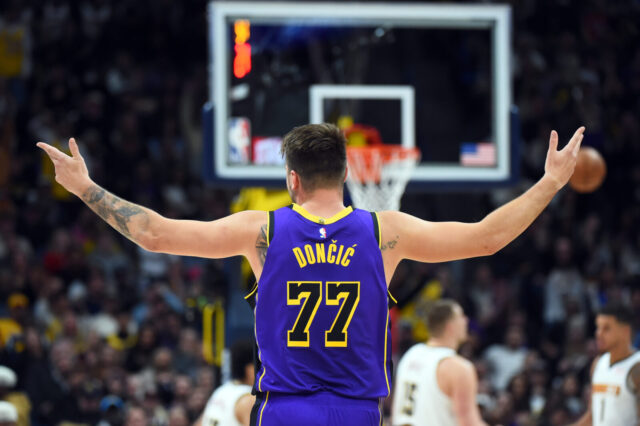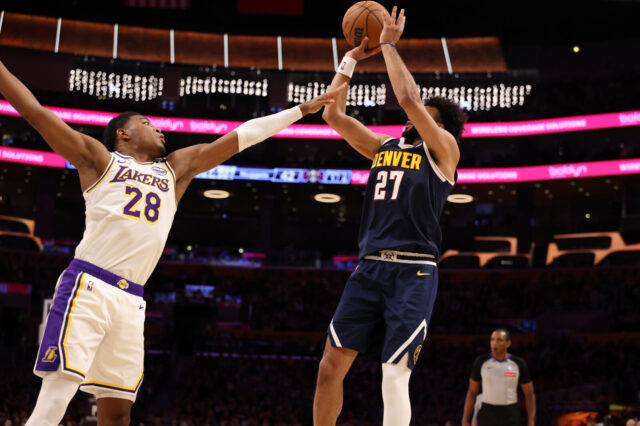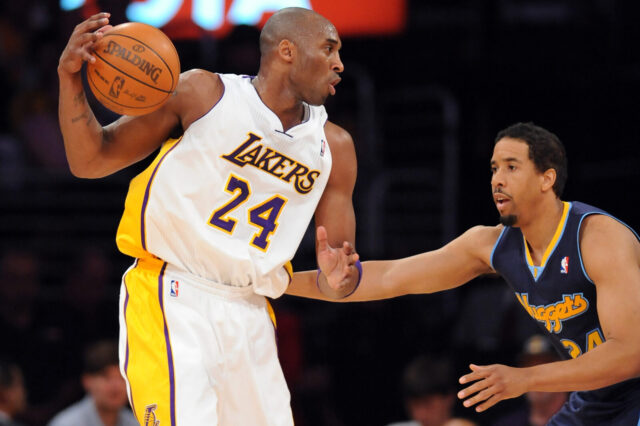The notion of a “twin towers” (two players in your starting lineup front court that are approaching 7 feet tall and would otherwise be centers in traditional configuration) goes clear back to the mid-1980’s Houston Rockets with their huge front court of Hakeem Olajuwon and Ralph Sampson. It “worked” getting the Rockets all the way to the NBA Finals in 1986 against what many consider to be the best Larry Bird led Boston Celtics team. The Rockets lost in 6 games. Later Sampson (injuries, personality issues) flamed out and the actual effectiveness of that lineup was incredibly brief.
The twin towers concept kind of fell by the wayside until the San Antonio Spurs took advantage of David Robinson’s injury (along with GM Gregg Popovich sandbagging Bob Hill into oblivion so he could take Hill’s job) in the 1996-97 season to get a higher position in the draft lottery (one more loss than the Nuggets) and drafted once-in-a-generation Tim Duncan after already having once-in-a-generation Robinson. The result was two championships in 5 seasons from 1999-2003.
Since David Robinson retired the concept of twin towers was only attempted once more. The 2008-10 Los Angeles Lakers with Pau Gasol and Andrew Bynum. This also resulted in 3 straight finals appearances and 2 titles. This was the last successful attempt at a twin towers lineup and the first attempt in the NBA’s modern era … but before such and emphasis on three-point shots. (While Marc Gasol and Zach Randolph are considered “twin towers” by some, for this purpose they are not used in this context because Randolph is a power forward throwback who happens to excel in the post.)
One true-ism for most of the NBA’s existence been that the most efficient shot is getting the tallest person the closest to the basket. That’s why a big man with so-called “post moves” was so coveted in the League for so many years. With changes to certain rules (illegal defense replaced with defensive three seconds, hand check etc…), the NBA has de-emphasized the role of the traditional center with back to the basket post moves and placed the emphasis on ball dominant point guards. There will be no retreat in this concept. The NBA has made a conscious decision to kill the role of the traditional center for a brand of more open basketball. Part evolution, part deliberate. The result has been that Tim Duncan may be the last of the epic, low post big men that dominated the NBA.
Working with the new concepts that the NBA has fomented deliberately means that emphasis has been to completely clear out big men from the lane in order to make more room for guards to drive. A concept that former Nuggets coach George Karl was famously responsible for, going so far as to park his centers out of bounds in order to create more space for a still-functional Ty Lawson to drive. So the foundational concept of the NBA, tallest/closest, has been replaced with shortest/closest and spacing for threes. So the pursuit for spacing has flipped the NBA on it’s ear, fundamentally.
What the Denver Nuggets are attempting to do with the so-called Jurkic lineup, aka Balkan Buddy Ball (Nikola Jokic and Jusuf Nurkic starting together) isn’t exactly like polishing a 1970’s Lincoln Continental and trying to pass it off as a brand new 2016 Astin Martin Vanquish. It’s more about taking the engine out of a Bugatti Veyron and placing it in a 1962 Shelby AC Cobra. The outside is old, but the insides and concept are completely different. Big inside small.
Since back to the basket bigs have been rendered ineffective and almost extinct, you have to find ultra-skilled big men to work within the current NBA concept. If you’re going to run with two bigs you MUST sacrifice some spacing for point guards, but with defensive rules changes designed to limit post clear-outs you need bigs who can pass with great skill in order to compensate for lack of “back down” time. You need a big who can facilitate from the low post and elbow more than the ability to score. Essentially you need your bigs to be like Pau Gasol circa 2008 or Marc Gasol circa now… but maxed to the extreme. You need to rebound and pass/create first, score second.
Do Nurkic and Jokic have what it takes to be that dynamic? The Nuggets are counting on the answer being a resounding yes.
The San Antonio Spurs tried to do a variation of the twin towers lineup in 2015 … but Tim Duncan’s skills had diminished so much that by the end of the year it resulted in LaMarcus Aldridge being a ball dominant power forward with little low post partner option. They were defeated by the Oklahoma City Thunder in the playoffs and their greater ability to dominate the boards and defend with their slightly more nimble bigs in Steven Adams and Enes Kanter.
Dominating the boards. A concept so simple that we almost take it for granted. With our hyper-focus on spacing we forget that all the spacing in the world won’t matter if you can’t get the rebound. The Northwest Division is undergoing a grand experiment to see if playing bigs can still work in the NBA, and part of that thinking goes to one fundamental tenant in the NBA that goes unheralded. Rebounding. One reason OKC could be a monster, and took a 3-1 lead over the Golden State Warriors in the Western Conference Finals last season was a simple notion that dominating the boards limits additional opportunities. Could the Nuggets be attempting that same concept along with the Utah Jazz and Minnesota?
In that sense, maybe the Nuggets are simply competing in a very fascinating and evolving Northwest Division that is featuring big men in unique ways. Be it Karl-Anthony Towns with the Minnesota Timberwolves, Rudy Gobert and Derrick Favors in Utah, Kanter, Adams and Domantas Sabonis in OKC and the Nuggets with Nurkic and Jokic. In a very sneaky way, the Northwest Division is becoming home to a grand experiment. Maybe the rescue of the NBA big man begins in Denver, Utah, Minnesota and OKC?
You never know.
***Stiffs Night Out***
We will be hosting SNO on opening night (October 26) at our home sports bar, Jake's Sports & Spirits in Denver's vibrant RiNo neighborhood at 3800 Walnut Street, Denver CO. Located conveniently across the street from the new 38th and Blake Commuter Rail Station and just five minutes (by car) from Coors Field. Jake's will extend happy hour for all Stiffs attendees.
The event is free to attend and all ages are welcome. It's a great way to meet fellow Nuggets fans and Stiffs readers in a fun and friendly environment. We look forward to seeing you there!


